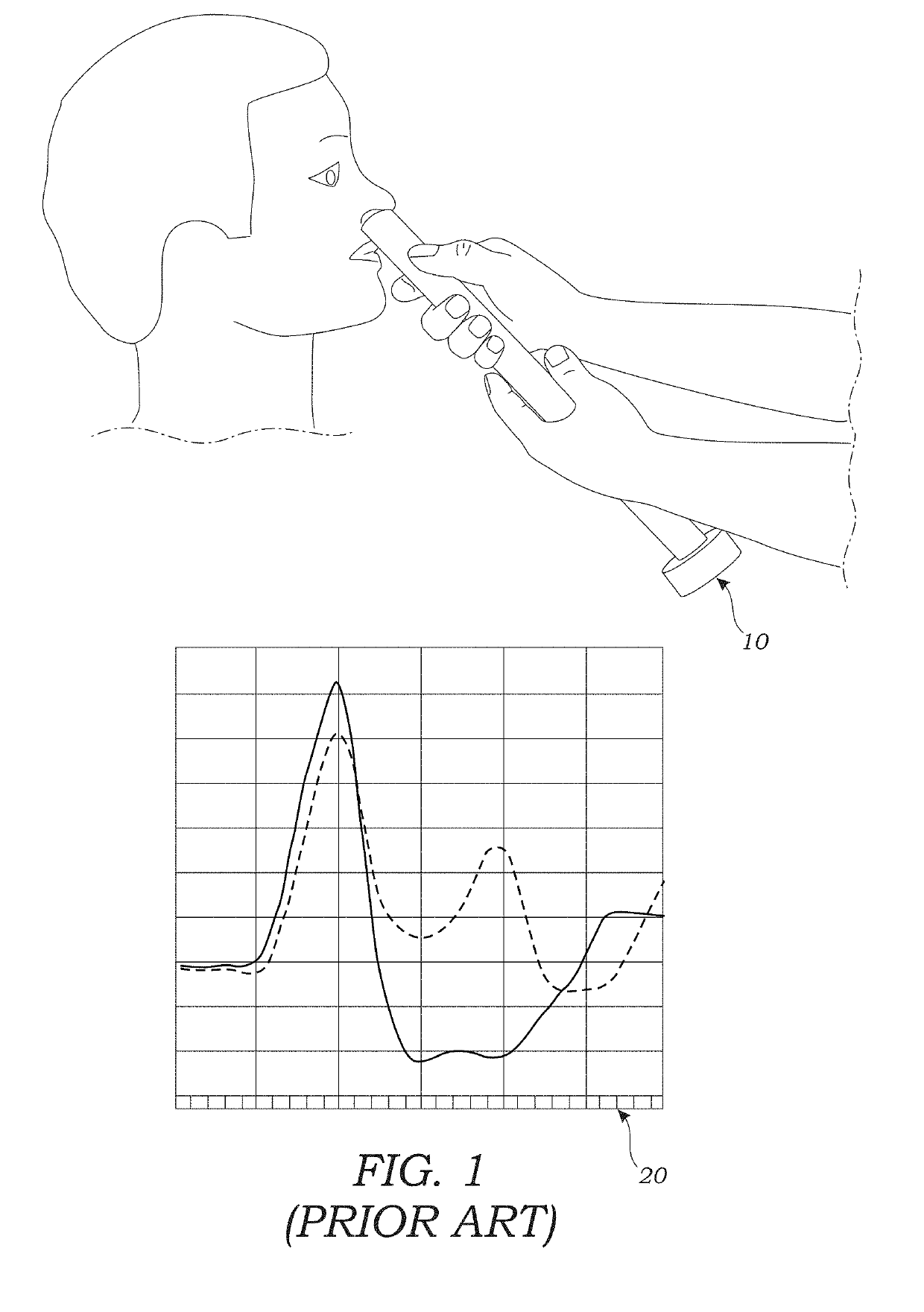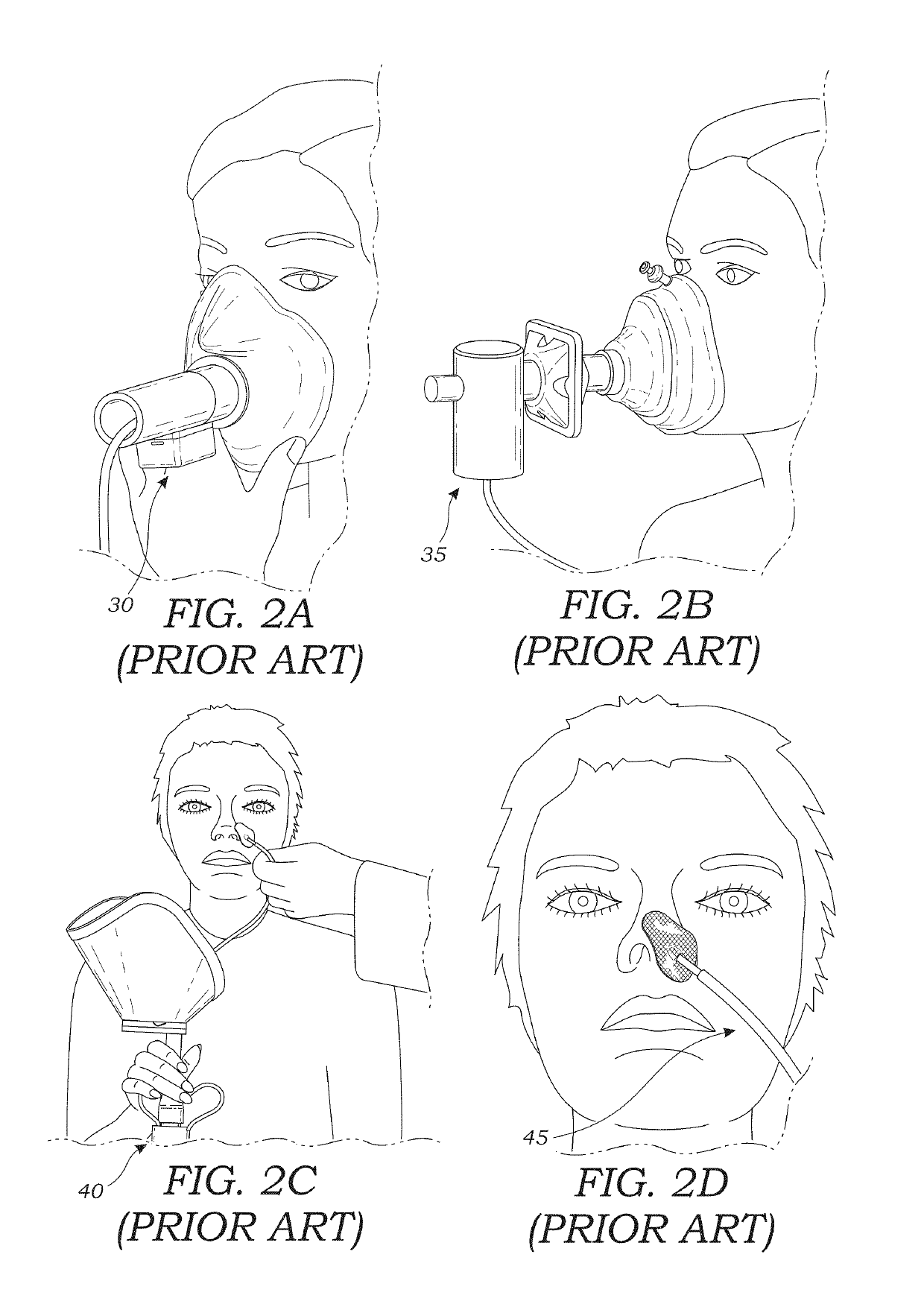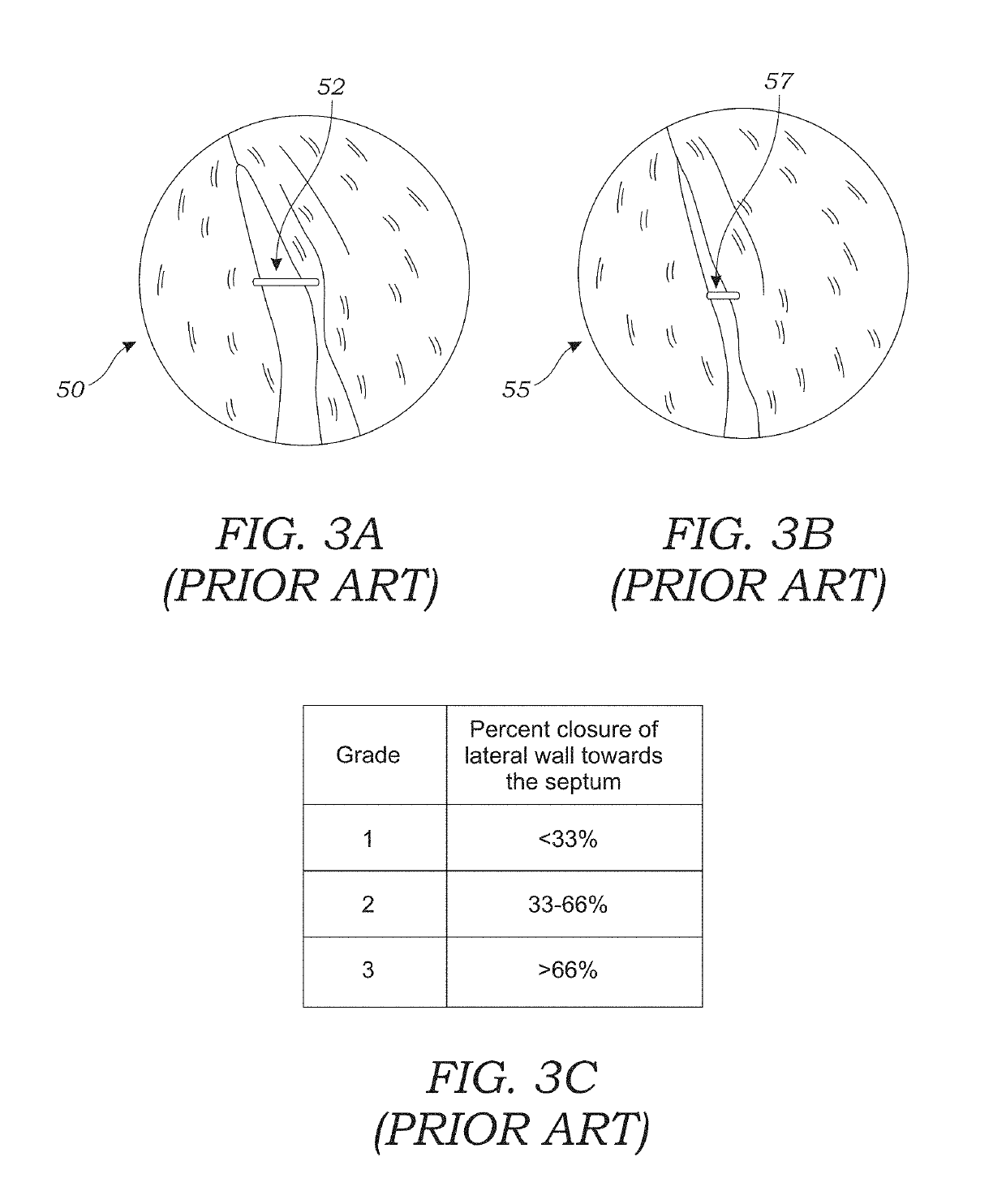Diagnostic tool and method of use
a diagnostic tool and a technology for nasal valves, applied in diagnostics, endoscopy, medical science, etc., can solve the problems of not widely accepted methods for performing this quantification, methods that do not capture and sometimes mask the dynamic effects of nasal valve collapse, and the difficulty of diagnosing nasal valve collaps
- Summary
- Abstract
- Description
- Claims
- Application Information
AI Technical Summary
Benefits of technology
Problems solved by technology
Method used
Image
Examples
Embodiment Construction
[0044]To improve resolution of the Most grading scale for nasal valve collapse, a method has been developed for capturing endoscopic visualization of lateral wall movement while simultaneously capturing nasal air flow rate without physically impeding the lateral wall movement.
[0045]The method includes the use of an airflow sensor connected to a full face mask to capture inspiratory air flow rate. The mask is designed to include a port below the nose which enables the introduction of an endoscope through a seal. Thus both airflow measurements and endoscopic video can be collected simultaneously. The method further includes software to synchronously capture both endoscopic video of lateral wall movement and air flow rate data.
[0046]Methods for determining a nasal valve collapse of a patient are provided. The methods can include: receiving one or more images of a nasal valve of a patient taken while the patient inhales and between exhalation and inhalation, the images taken with an end...
PUM
 Login to View More
Login to View More Abstract
Description
Claims
Application Information
 Login to View More
Login to View More - R&D
- Intellectual Property
- Life Sciences
- Materials
- Tech Scout
- Unparalleled Data Quality
- Higher Quality Content
- 60% Fewer Hallucinations
Browse by: Latest US Patents, China's latest patents, Technical Efficacy Thesaurus, Application Domain, Technology Topic, Popular Technical Reports.
© 2025 PatSnap. All rights reserved.Legal|Privacy policy|Modern Slavery Act Transparency Statement|Sitemap|About US| Contact US: help@patsnap.com



